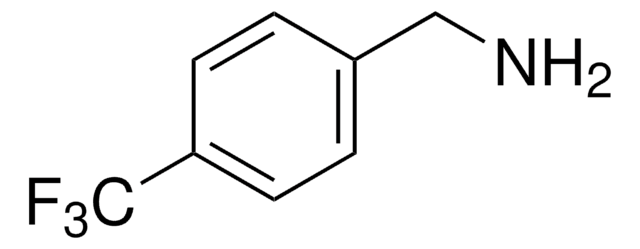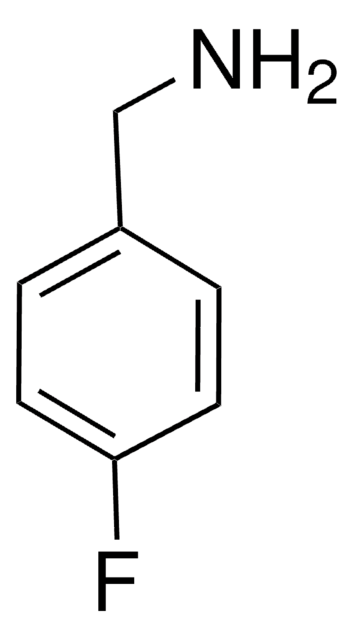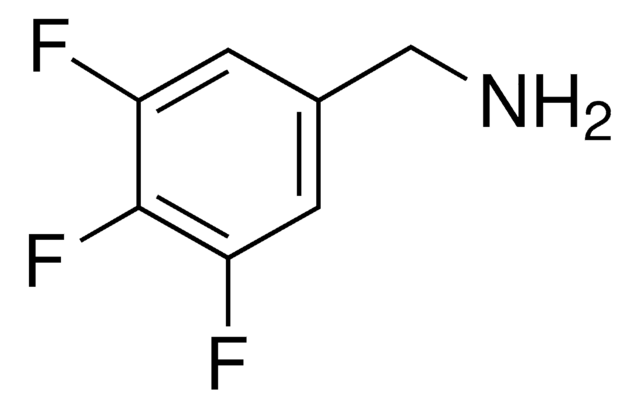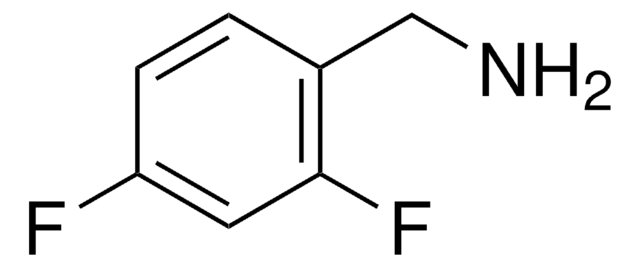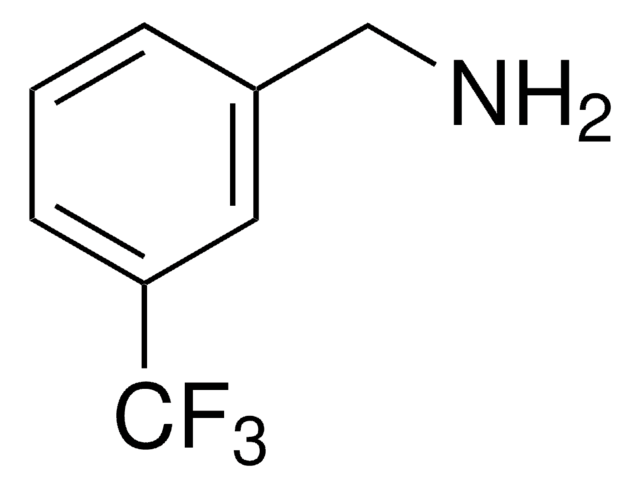모든 사진(1)
About This Item
Linear Formula:
F2C6H3CH2NH2
CAS Number:
Molecular Weight:
143.13
MDL number:
UNSPSC 코드:
12352100
PubChem Substance ID:
NACRES:
NA.22
추천 제품
Quality Level
분석
96%
refractive index
n20/D 1.491 (lit.)
bp
184 °C (lit.)
density
1.21 g/mL at 25 °C (lit.)
작용기
amine
fluoro
SMILES string
NCc1cc(F)cc(F)c1
InChI
1S/C7H7F2N/c8-6-1-5(4-10)2-7(9)3-6/h1-3H,4,10H2
InChI key
VJNGGOMRUHYAMC-UHFFFAOYSA-N
애플리케이션
3,5-Difluorobenzylamine (DFBA) has been used as a derivatization reagent in the following studies:
- Determination of epichlorohydrin (ECH) in water by GC/MS analysis in selected ion monitoring (SIM) mode.
- Analysis of the epoxides 1,2-epoxybutane, epichlorohydrin, and epifluorohydrin in water by GC/MS analysis.
- Estimation of ECH in water by on-line solid-phase extraction (SPE) coupled to liquid chromatography/electrospray ionization tandem mass spectrometry (LC/ESI-MS/MS) using a triple quadrupole mass spectrometer.
신호어
Danger
유해 및 위험 성명서
Hazard Classifications
Skin Corr. 1B
Storage Class Code
8A - Combustible corrosive hazardous materials
WGK
WGK 3
Flash Point (°F)
165.2 °F - closed cup
Flash Point (°C)
74 °C - closed cup
개인 보호 장비
Faceshields, Gloves, Goggles, type ABEK (EN14387) respirator filter
Cristina Ripollés et al.
Rapid communications in mass spectrometry : RCM, 23(12), 1841-1848 (2009-05-15)
A new sensitive and selective method based on on-line solid-phase extraction (SPE) coupled to liquid chromatography/electrospray ionization tandem mass spectrometry (LC/ESI-MS/MS) using a triple quadrupole mass spectrometer has been developed for the determination of epichlorohydrin (ECH) in different types of
Stuart J Khan et al.
Analytical chemistry, 78(8), 2608-2616 (2006-04-18)
Trace concentrations of small soluble epoxides are suspected byproducts of drinking water ozonation. However, adequate characterization of epoxide formation is currently limited by the lack of suitable analytical methods to target these chemicals in dilute, but complex aqueous solutions. One
자사의 과학자팀은 생명 과학, 재료 과학, 화학 합성, 크로마토그래피, 분석 및 기타 많은 영역을 포함한 모든 과학 분야에 경험이 있습니다..
고객지원팀으로 연락바랍니다.